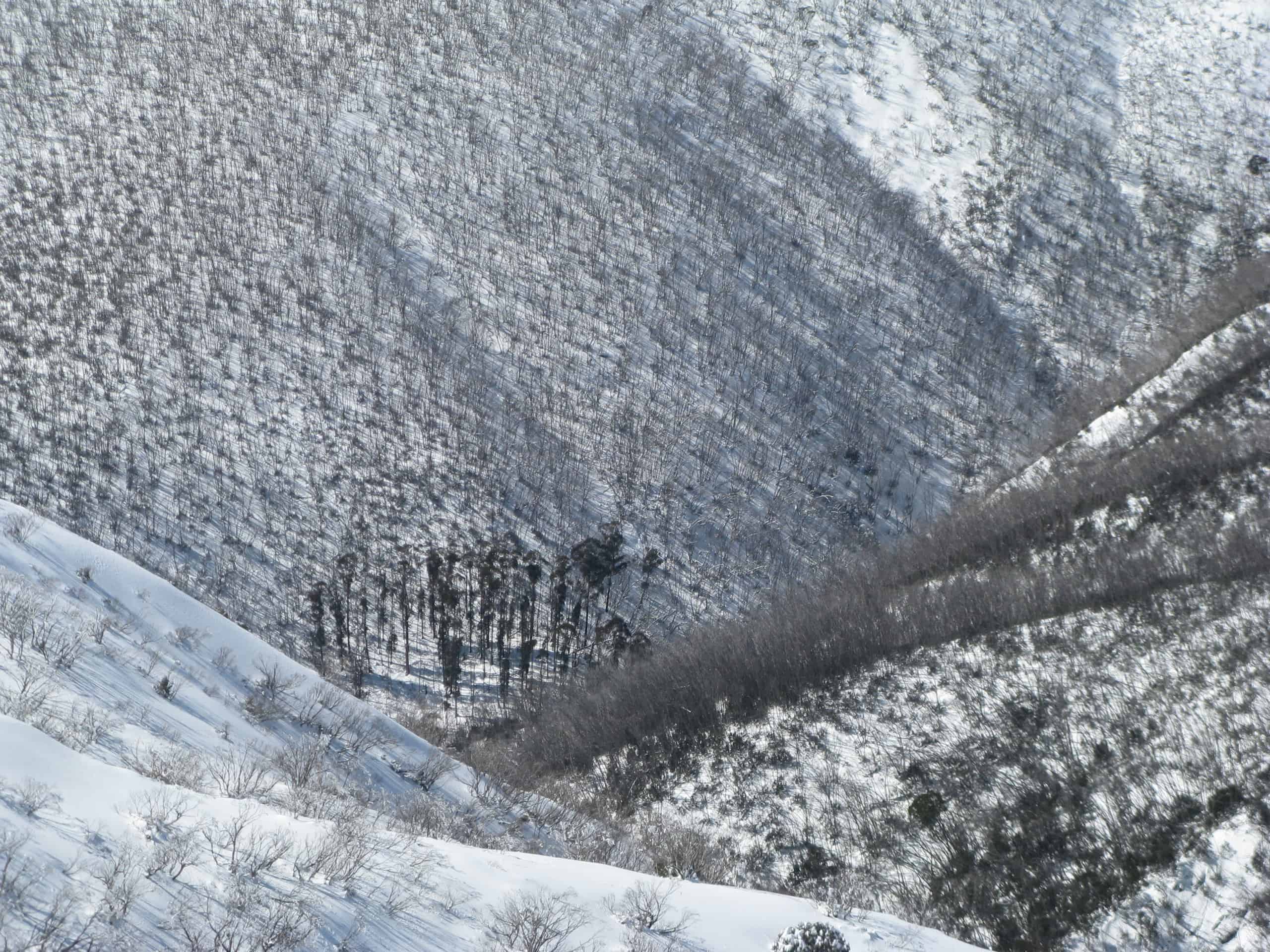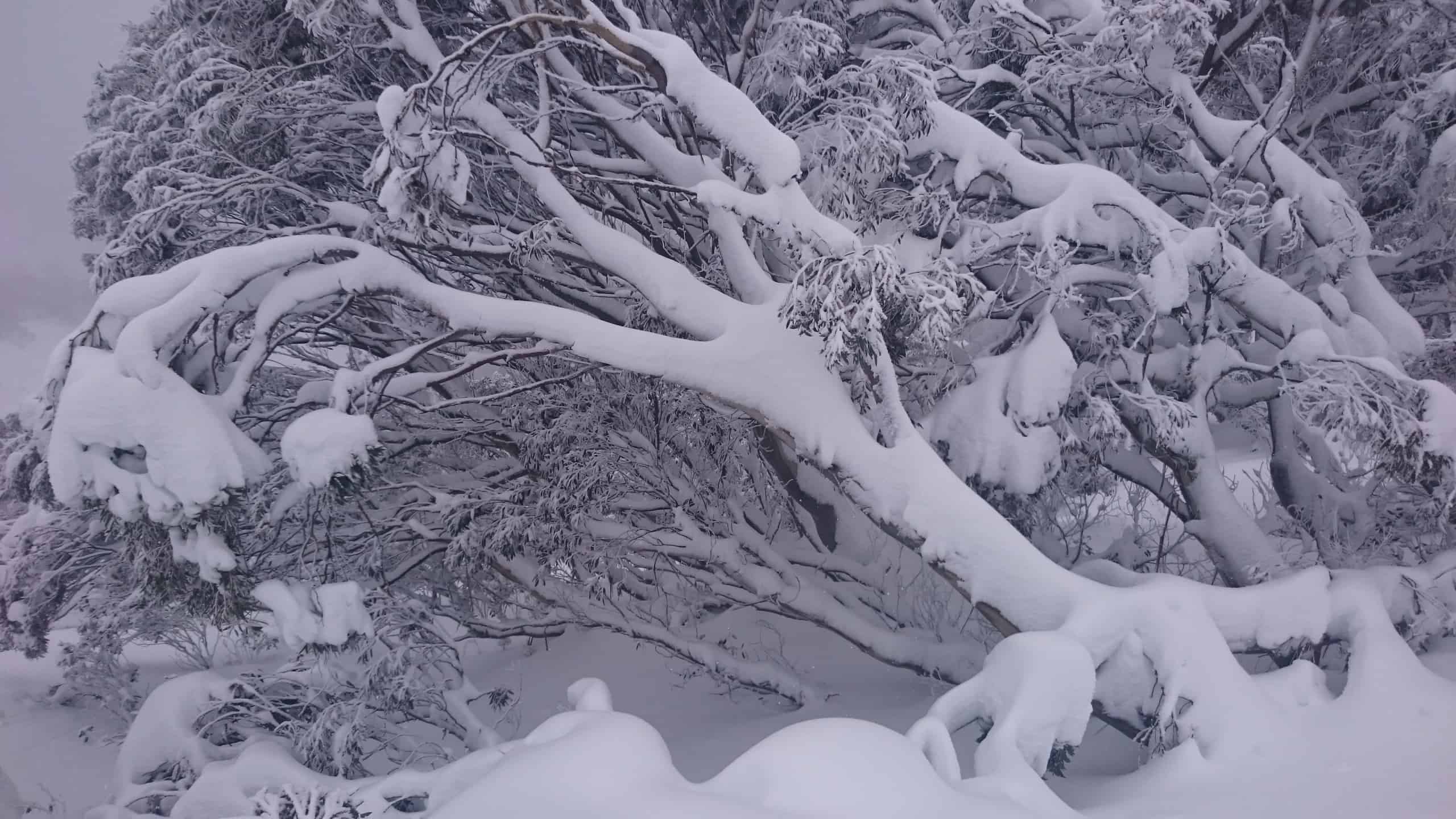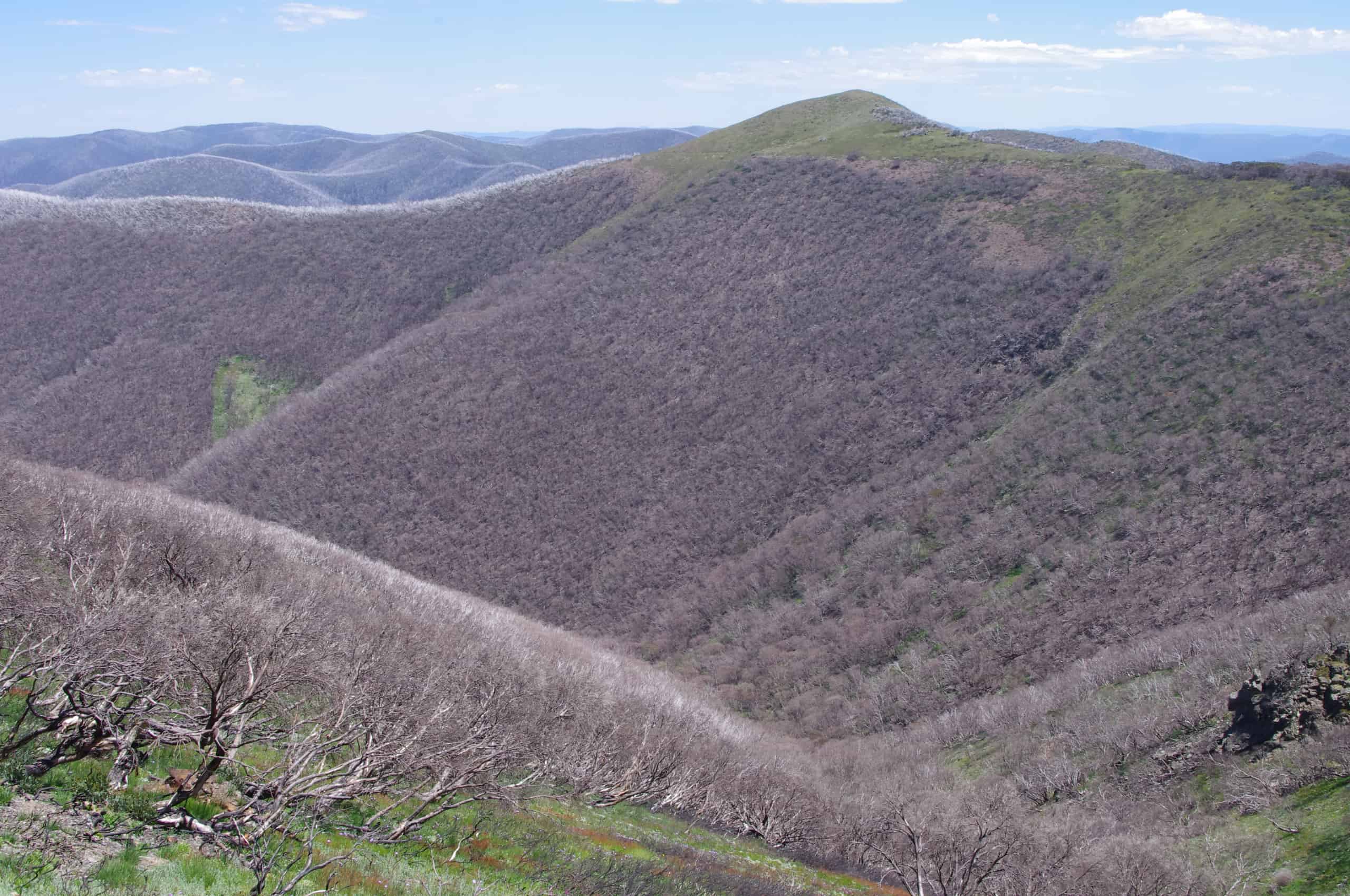Are We Losing the Iconic Snow Gum? A New Report Highlights the Risks faced by the Australian Alps

Mountainwatch| Press Release
Snow Gums (Eucalyptus pauciflora) are the classic alpine tree of the High Country, generally growing at elevations between 1,300 and 1,800 metres. Anyone who has visited the Australian High Country will know – and probably love – these trees.
In recent decades, wildfire has been devastating huge areas of the Snow Gum forests, with significant fires in the Victorian High Country in 1998, 2002/3, 2006/7, 2013 and 2019/20. More than 90% of Snow Gum habitat in the state has been burnt at least once in the last 20 years.
The species can survive fire and can also regenerate after fire. However, climate change-driven fire seasons are leading to more frequent fire, which is causing more death of trees and changes to forest structure. In some instances, localised collapse of Snow Gum woodlands is now being observed. As climate scientist Michael Mann describes it, we are now seeing climate change play out in real time.
“We must ask whether we are now seeing the start of the collapse of Snow Gum woodlands, one of Victoria’s iconic vegetation communities,” said Cam Walker, campaigns co-ordinator with Friends of the Earth.
Another of our much-loved mountain trees is the Alpine Ash. They are also facing potential ‘community collapse’. After the 2013 Harrietville-Alpine Bushfire, the Department of Sustainability and Environment, now DELWP) and Parks Victoria initiated a rapid response forest recovery program, which aimed to restore Alpine Ash forests that had been burnt and where only limited numbers of parent trees had survived. Since then, the program has been expanded considerably as more areas have been burnt multiple times.

A new report, An Icon at Risk, Current and Emerging threats to the Victorian High Country, (available here) produced by Friends of the Earth highlights the many risks faced by the Alps, including the potential loss of the Snow Gum forests. Most of these threats stem from climate change, which is driving more intense fire seasons and drying out the alpine and valley environments.
Drawing on a range of sources, the report highlights the threats, and makes a series of recommendations to state government and land managers.
As noted in the first report into the Inspector-General for Emergency Management (IGEM) investigation into the 2019/20 fires, ’the past is no longer a reliable guide to the influence of climate and weather upon bushfires into the future’. The world has changed profoundly in recent decades.
Report author Cam Walker said, “Many people still think of climate change as something that will happen somewhere else, in another time. The Alps we know are changing before our eyes, in real time. Climate change impacts on almost every aspect of the natural environment in the Victorian High Country, from longer fire seasons and reduced stream flow to less snowpack”.
“We are now seeing the beginning of ecosystem collapse in the Snow Gum forests. We need to intervene to keep these systems viable into the future. That means building our firefighting capacity to keep fire out of these systems as they recover.”
“The central message of this report is the fact that, like all other natural ecosystems on the continent, the Alps face an existential threat from human-induced global heating. Key vegetation communities, like Alpine Ash forests, Snow Gum woodland and alpine environments are already being transformed by climate change. Loss of reliable winter snows will transform the higher mountains. And fire seasons are becoming longer and more intense and potentially unable to be managed at the landscape level.
“We are on the verge of losing the landscapes that we spent decades protecting”.

Key recommendations
The Victorian government should:
- – continue to increase funding for national parks across the Alps to ensure adequate fire protection, control of invasive species and management of visitor impacts. Funding to Parks Victoria should be a minimum of 1 per cent of state revenue
- – increase the number of career remote area fire fighters to protect national parks and other public lands
- – create a volunteer remote area firefighting force within the CFA, as Tasmania, NSW and the ACT have don
- – lobby the federal government to establish a publicly owned air fleet of Large Air Tankers.
- – assess whether Snow Gum woodlands require the same level of direct intervention that Alpine Ash currently receives through recovery programs
- – rapidly develop a plan to assess and manage the scale of dieback of Snow Gum woodlands due to damage caused by beetles
- – ensure fire sensitive communities such as peatlands, Snow Gums and Alpine Ash can be protected from future fires through adequate resourcing of ground and air fire fighting capacity
- – rule out any further salvage logging in burnt Alpine Ash communities
- – carry out a full and independent review of the ecological costs and benefits of fuel reduction burning as a matter of urgency.
You can read the full report here




